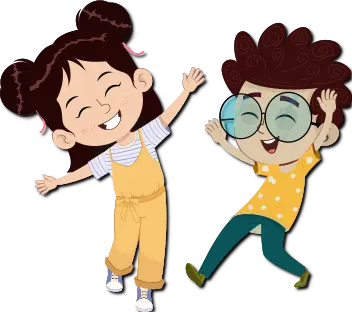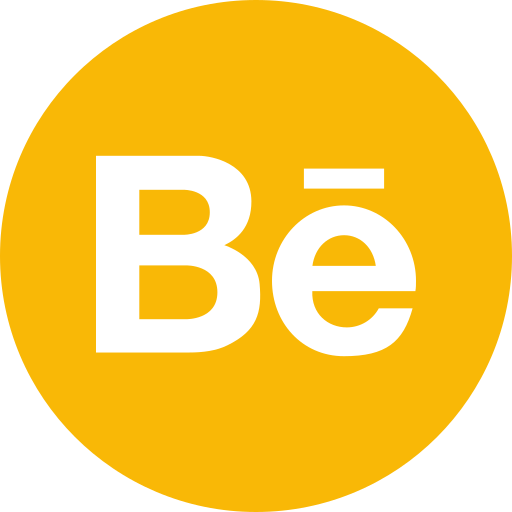
How to Design a Character - A Deep Dive into Character Design
Quick Takeaways:
- Character design is the bedrock of any great animation.
- Know the purpose and audience for your character before designing it.
- Take familiar elements and give them unique twists to make them memorable to the audience.
- Know that iteration and feedback form the most important part of the design process.
The Heart of Animation: Why Character Design Matters
The characters are what form the heart of any animation project: the vessels through which stories are told, and in most cases, through which emotions are conveyed. Good character design is not only visually stunning but entails the craft of bringing a personality to the screen and into the hearts of viewers.
Know Your Purpose: The First Step in Character Design
But before you really get down to putting pencil to paper, or stylus to tablet, there’s one very important question to ask yourself: what is the purpose of the character? Are they the hero of some big, sweeping epic? A sidekick who provides comic relief? The villain everybody loves to hate?
Knowing what purpose your character will serve in a story is almost like having a roadmap for your design journey. This will give meaning to every decision you make about your character’s physical appearance, mannerisms, and even color palette.
Knowing what purpose your character will serve in a story is almost like having a roadmap for your design journey. This will give meaning to every decision you make about your character’s physical appearance, mannerisms, and even color palette.
Here’s a quick breakdown of how purpose can influence design:
| Purpose | Influence on Design |
|---|---|
| Entertainment | Characters should be visually appealing, with exaggerated features and expressions to evoke emotions. |
| Education | Designs should be clear and simple to aid in understanding, often with labels or interactive elements. |
| Marketing | Designs should grab attention quickly, be memorable, and align with brand identity. |
| Interactive Experiences | Designs should prioritize functionality and user engagement, often with an emphasis on usability. |

Know Your Audience: Designing for Different Demographics
Equally important to understanding your character’s purpose is knowing who you design for. Preferences and expectations of a preschool audience differ greatly from those of teenagers or adults. Let’s break it down:
Designing for Kids: Keep It Simple and Fun
One should not forget the simplicity of design for young children. Simple, bold, bright colors, easy shapes, and exaggerated features tend to work well. Characters like “Paw Patrol” or “Bluey”—with big eyes, simplistic, instantly recognizable, and easy to process in young minds.
- Use Primary colours
- Avoiding intricate details
- Exaggerating key features {big eyes, expressive faces}
- Creating distinctly recognizable silhouettes
Teens and Young Adults: Edgy and Relatable
Now, with older kids and teenagers, you can really begin to pull out all the stops. This age bracket definitely has a greater affection for more refined character designs with cooler colors, and characters reflecting experiences and adversities that they go through.
- Feel free to play with unconventional style options
- Add trendy elements, though be aware not to date your character potentially
- Design flawed, insecurely relatable characters
- Think about different representations
Audiences of Adults: Subtle Complexity
With adults, you have the most freedom. You can add more subtle detail, advanced color palettes, and facial expression subtleties. Adults often appreciate depth and life in a character that comes out through their design.
- Use more muted, or sophisticated color palettes
- Subtle detail that provides a sense of the history of the character
- Realism (even in stylized characters)
- Don’t be afraid to add imperfections— they bring out realism

The Building Blocks of Character Design
Now that we have gone over the importance of purpose and audience, let’s dive into the real nuts and bolts of design. Every character, no matter how simple or complex is built from these same base elements:
1. Silhouette: The Power of Shape
The silhouette is the cornerstone of good character design. It’s the outline of a character in its most basic shape. A striking silhouette will render a character instantly recognizable, whether from a great distance or little light.
Pro Tip: Design your character as a black shape first. If you can identify them then, you’re in good shape.
Pro Tip: Design your character as a black shape first. If you can identify them then, you’re in good shape.
2. Form: Bringing Dimension into Life
Once you’ve nailed the silhouette, you can move on to form. You’ll have to start thinking in three dimensions: how your character looks from other angles. Pay attention to the interaction of forms, for example, how the form of the nose is going to affect the form of the cheeks, how shoulders meet the neck, and so on.
3. Proportion: Playing with Expectations
Proportion is simply about the relationship of parts to your character. Being one of the most powerful personality and age-defining techniques, exaggeration in proportion will make a character more cartoony and appealing, while realistic proportions can help ground the character in reality.
Here is an ultra-quick guide to proportion and what it tends to convey:
Here is an ultra-quick guide to proportion and what it tends to convey:
- Large head, small body: Youthful, cute
- Long limbs, small torso: Graceful, agile
- Short limbs, large torso: Strong, sturdy
- Equal head-to-body ratio: Mature, realistic
4. Color: The Silent Storyteller
Color is one of the strongest weapons in your character design arsenal. It can express emotion, hint at personality, or even foreshadow plot points. Here are some basic associations to remember:
- Red: Passion, anger, energy
- Blue: Calm, trust, sadness
- Green: Nature, growth, envy
- Yellow: Happiness, optimism, caution
- Purple: Royalty, mystery, creativity

Putting It All Together: A Character Design Process
Now that we’ve talked about the building blocks, let’s walk through the process of how to design a character from scratch.
1. Research and Inspiration
Every great design starts with research. Get into the setting your character will live. What are the surroundings? The time period? Cultural context? Gather reference, make mood boards, and create a visual library in your head.
2. Sketching and Exploration
Now, this is where things get interesting—start sketching! Don’t worry too much about perfection at this stage. The idea is just to generate. Try different body types, facial features, and clothing styles. Push yourself toward exaggeration and stylization.
Pro Tip: Set a timer to 5 minutes and see how many variations of your character you can get down. This exercise can sometimes help you break out of design ruts and force some fresh ideas out.
Pro Tip: Set a timer to 5 minutes and see how many variations of your character you can get down. This exercise can sometimes help you break out of design ruts and force some fresh ideas out.
3. Refining Your Design
If you have a few promising sketches, then it’s time to refine them. You really start to key in on detail now, thinking about how all the elements work together. This is also the stage where you may start considering how the characters will move and express themselves.
4. Adding Color and Texture
With your refined sketch in hand, it’s time to bring your character to life with color. Experiment with different color schemes, both suiting the personality of your character and the overall palette of your project.
5. Designing a Character Sheet
A character sheet is the most crucial document during animation. It holds all the information to draw and animate your character in a consistent way. A standard character sheet contains the following:
- Front, side and back view
- Facial expressions
- Key poses
- Color palette
- Props or accessories
- Size, compared to other characters
6. Iteration and Feedback
Design rarely works in a straight line. Be ready to iterate on your work after getting feedback from colleagues, clients, or test audiences. Don’t be precious. Sometimes the best designs come out of the willingness to scrap everything and start over.

Beyond the Basics: Advanced Character Design Techniques
If you have got the basics nailed down pat and want to move ahead with new challenges, here are some advanced techniques that can help you along your way:
1. Shape Language: Conveying Through Form
Shape language refers to the use of forms that connote aspects of personality or storytelling. For example:
- Circles and curves: Friendly, approachable
- Squares and rectangles: Stable, trustworthy
- Triangles and sharp angles: Dynamic, potentially dangerous

2. Contrast and Harmony: Creating Visual Interest
A compelling character will often mix elements of contrast and harmony. This may occur through their color scheme, proportions, or personality traits. For example, the hulking, rough-looking guy who has a soft spot for kittens creates an interesting contrast that draws viewers in.
3. Cultural Literacy: Designing with Sensitivity
With our increasingly global media, one has to make sure that there are culturally sensitive characters. It really comes down to research—finding those harmful stereotypes and appropriation that might turn up. Consult from the culture you are drawing from when it isn’t yours.
Common Pitfalls in Character Design (And How to Avoid Them)
Even seasoned designers can sometimes fall into traps in the creation of a character. Here are some common pitfalls to watch out for:
1. Overdesigning
It is easy to get carried away and add too many details to a character. Remember, less is often more in animation. Every element should serve a purpose that in some way helps to inform the character’s personality or even make them easier to animate.
How to avoid it: Step back often and ask yourself, ‘Is each design element really necessary?’ If you can remove it and the character still holds its integrity, then scrape it.
How to avoid it: Step back often and ask yourself, ‘Is each design element really necessary?’ If you can remove it and the character still holds its integrity, then scrape it.
2. Lack of Originality
With so many characters out there, it’s pretty tough to come up with something that is original. But rehashing a little too much from other designs might end in a character that tastes derivative and forgettable.
How to avoid it: It’s totally cool if you get inspiration from other characters, but add your flair on it. Put together in unusual ways or subvert common tropes.
How to avoid it: It’s totally cool if you get inspiration from other characters, but add your flair on it. Put together in unusual ways or subvert common tropes.
3. Ignoring Practical Considerations
The character looks cool as a static image. Have you thumbed through how they’ll animate? Will that intricate costume be a nightmare for an animator? Can they do a full range of emotions?
How to avoid: Always be thinking about animation when you design. Test out your character in different poses and expressions early on in the process.
How to avoid: Always be thinking about animation when you design. Test out your character in different poses and expressions early on in the process.
Future of Character Design: Emerging Trends and Technologies
As we wrap up, let us see where exactly character design is headed:
1. 3D Modeling and Rigging
While 2D animation is by no means dead, the impression that 3D animation has made will only continue to grow. Grasping 3D modeling and rigging can definitely set your designs apart—giving you the ability to take characters from 2D concept through to 3D model with ease.
2. AI and Procedural Generation
Artificial intelligence can make waves in all areas of design, including character creation. While it won’t replace human designers anytime soon, it can be a very powerful tool for generating ideas and streamlining workflows.
3. Virtual and Augmented Reality
The improvement of VR and AR technologies is giving way to new frontiers in character design. Designing characters that work well in 3D, interactive environments is full of unique challenges and opportunities.
Wrapping Up: The Art and Science of Character Design
Character design is a journey in creativity, technical skill, and deep understanding of storytelling and human nature. But with time and devotion, you will create characters that charm audiences and last through time.
Remember that there really isn’t one “right” way to design a character. Techniques and principles have been discussed throughout, but these are guides rather than rules. The most important thing is passion and personality within your designs. After all, that’s what brings a character to life.
Now get out there and create! For all you know, the next really great iconic animated character may be waiting in your sketchbook right now.
Remember that there really isn’t one “right” way to design a character. Techniques and principles have been discussed throughout, but these are guides rather than rules. The most important thing is passion and personality within your designs. After all, that’s what brings a character to life.
Now get out there and create! For all you know, the next really great iconic animated character may be waiting in your sketchbook right now.
FAQ: Your Blazing Character Design Questions Answered
1. Should I start designing the outfit first or the body for my character?
Always start out with a character form having a body and basic shape before considering the addition of clothing. This is, in fact important to make sure that the very basic design of the character is solid and the clothing goes well with the body type and personality.
2. How vital is color in character design?
It can, indeed, show up the personality, emotion, and even plot elements. However, a powerful character design must work even in black and white.
3. How do I design characters for different animation styles?
Observe the kind of style you are going to draw and then practice it. Look at the level of detail that’s there, how the proportions are treated, what stylistic elements are repeated.
4. Is it okay to revise a character design after animation has started?
Although minor adjustments are usually acceptable, major changes in character design at the beginning of an animation process can be very time-consuming and costly. It is therefore best to lock in your designs as much as possible before animation begins.
5. How do I create a style guide for my character design?
A style guide usually includes the character’s front, side, and back views, a color palette, examples of key expressions and poses, and any other important details or props. It should contain all the information that anyone interested will need to portray the character in a uniform way.
Let's Discuss !!














